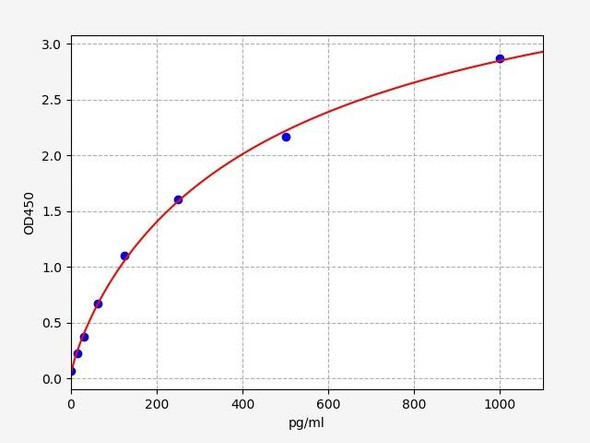Anti-alpha + beta Synuclein Antibody (CAB4899)
- SKU:
- CAB4899
- Product type:
- Antibody
- Antibody Type:
- Monoclonal Antibody
- Reactivity:
- Human
- Mouse
- Rat
- Host Species:
- Rabbit
- Isotype:
- IgG
- Synonyms:
- NACP
- PARK1
- PARK4
- PD1
Description
| Product Name: | alpha + beta Synuclein Rabbit mAb |
| Product Code: | CAB4899 |
| Size: | 20uL, 50uL, 100uL |
| Synonyms: | NACP, PARK1, PARK4, PD1 |
| Applications: | WB, IF |
| Reactivity: | Human, Mouse, Rat |
| Host Species: | Rabbit |
| Immunogen: | A synthesized peptide derived from human alpha + beta Synuclein |
| Applications: | WB, IF |
| Recommended Dilutions: | WB 1:500 - 1:2000 IF 1:50 - 1:200 |
| Reactivity: | Human, Mouse, Rat |
| Positive Samples: | U-87MG, Mouse brain, Rat brain |
| Immunogen: | A synthesized peptide derived from human alpha + beta Synuclein |
| Purification Method: | Affinity purification |
| Storage: | Store at -20°C. Avoid freeze / thaw cycles. Buffer: PBS with 0.02% sodium azide, 0.05% BSA, 50% glycerol, pH7.3. |
| Isotype: | IgG |
| Sequence: | Email for sequence |
| Gene ID: | 6622/6620 |
| Uniprot: | P37840/Q16143 |
| Calculated MW: | 18kDa |
| Observed MW: | 18KDa |
| UniProt Protein Function: | SNCA: a member of the synuclein family. Abundantly expressed in the brain. Inhibits phospholipase D2 selectively. May integrate presynaptic signaling and membrane trafficking. Implicated in the pathogenesis of Parkinson's disease. A major component of amyloid plaques in the brains of patients with Alzheimer's disease. Two alternatively spliced isoforms transcripts have been identified. |
| UniProt Protein Details: | Protein type:Adaptor/scaffold Chromosomal Location of Human Ortholog: 4q21 Cellular Component: Golgi apparatus; nuclear outer membrane; mitochondrion; rough endoplasmic reticulum; lysosome; extracellular region; fibril; terminal button; inclusion body; cell cortex; mitochondrial respiratory chain complex I; cytosol; actin cytoskeleton; synaptic vesicle; platelet alpha granule membrane; growth cone; perinuclear region of cytoplasm; axon; cytoplasm; plasma membrane; ribosome; cell junction; nucleus Molecular Function:protein domain specific binding; identical protein binding; histone binding; zinc ion binding; kinesin binding; ferrous iron binding; microtubule binding; caspase inhibitor activity; beta-tubulin binding; magnesium ion binding; phosphoprotein binding; protein N-terminus binding; oxidoreductase activity; Hsp70 protein binding; calcium ion binding; dynein binding; protein binding; copper ion binding; phospholipase binding; phospholipid binding; tau protein binding; fatty acid binding; alpha-tubulin binding Biological Process: regulation of long-term neuronal synaptic plasticity; negative regulation of serotonin uptake; regulation of acyl-CoA biosynthetic process; adult locomotory behavior; positive regulation of apoptosis; negative regulation of norepinephrine uptake; mitochondrial membrane organization and biogenesis; microglial cell activation; response to lipopolysaccharide; positive regulation of endocytosis; dopamine biosynthetic process; negative regulation of transcription from RNA polymerase II promoter; negative regulation of caspase activity; negative regulation of monooxygenase activity; fatty acid metabolic process; positive regulation of neurotransmitter secretion; regulation of dopamine secretion; negative regulation of dopamine uptake; negative regulation of histone acetylation; calcium ion homeostasis; negative regulation of exocytosis; response to magnesium ion; negative regulation of protein amino acid phosphorylation; behavioral response to cocaine; receptor internalization; phospholipid metabolic process; fibril organization and biogenesis; synapse organization and biogenesis; dopamine uptake; negative regulation of neuron apoptosis; response to iron(II) ion; positive regulation of receptor recycling; aging; caspase activation; response to drug; neutral lipid metabolic process; protein destabilization; regulation of macrophage activation; regulation of glutamate secretion; negative regulation of microtubule polymerization; positive regulation of peptidyl-serine phosphorylation; negative regulation of dopamine metabolic process; organelle ATP synthesis coupled electron transport; regulation of locomotion; synaptic vesicle endocytosis; positive regulation of release of sequestered calcium ion into cytosol; regulation of excitatory postsynaptic membrane potential; negative regulation of transporter activity; negative regulation of apoptosis Disease: Parkinson Disease 4, Autosomal Dominant; Dementia, Lewy Body; Parkinson Disease 1, Autosomal Dominant |
| NCBI Summary: | Alpha-synuclein is a member of the synuclein family, which also includes beta- and gamma-synuclein. Synucleins are abundantly expressed in the brain and alpha- and beta-synuclein inhibit phospholipase D2 selectively. SNCA may serve to integrate presynaptic signaling and membrane trafficking. Defects in SNCA have been implicated in the pathogenesis of Parkinson disease. SNCA peptides are a major component of amyloid plaques in the brains of patients with Alzheimer's disease. Four alternatively spliced transcripts encoding two different isoforms have been identified for this gene. [provided by RefSeq, Mar 2009] |
| UniProt Code: | P37840 |
| NCBI GenInfo Identifier: | 586067 |
| NCBI Gene ID: | 6622 |
| NCBI Accession: | P37840.1 |
| UniProt Secondary Accession: | P37840,Q13701, Q4JHI3, Q6IAU6, A8K2A4, |
| UniProt Related Accession: | P37840 |
| Molecular Weight: | 140 |
| NCBI Full Name: | Alpha-synuclein |
| NCBI Synonym Full Names: | synuclein, alpha (non A4 component of amyloid precursor) |
| NCBI Official Symbol: | SNCA |
| NCBI Official Synonym Symbols: | PD1; NACP; PARK1; PARK4 |
| NCBI Protein Information: | alpha-synuclein; synuclein alpha-140; non A-beta component of AD amyloid |
| UniProt Protein Name: | Alpha-synuclein |
| UniProt Synonym Protein Names: | Non-A beta component of AD amyloid; Non-A4 component of amyloid precursor; NACP |
| Protein Family: | Alpha-synuclein |
| UniProt Gene Name: | SNCA |
| UniProt Entry Name: | SYUA_HUMAN |








